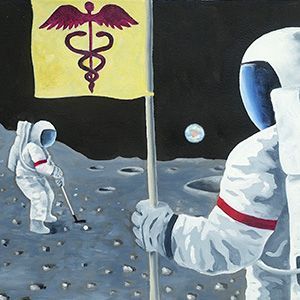cover story one
Mission Management
Connecting hospital trustees and physicians
By Daniel K. Zismer, PhD
During a presentation to a not-for-profit community health system all-boards retreat, I asked the following question of the system CFO: “What do you need as a profit margin from commercial third party payers to compensate for losses on uncompensated care, and reimbursements from governmental payers.” I didn’t ambush him: he was prepared with the answer, “from 38-43%”. There was an audible gasp by one of the board participants, who happened to be a senior executive from a large publicly traded company. He followed with: “There it is, another hidden healthcare tax.
cover story two
Generation Now Nursing: Redefining the value proposition
By CAROLYN PORTA, PhD, RN, MPH, FAAN
Nurses have a crucial role in health care, serving as the mycelia that connects, communicates, supports and intervenes on multiple aspects of patient care. Mycelium (plural mycelia) is a root-like structure of a fungus that is made up of a large mass of branching, thread-like hyphae that are far-reaching, connected and critical to the health of nearly every species of plants, as well as to animals. This comparison of nursing to spemycelium highlights the complex network that nurses compose and operate within, being responsible for “transporting critical nutrients and communication across various species.”
Health Care Architecture
Behavioral Health Care in Greater Minnesota: A new inpatient facility in Bemidji
BY Craig Clark, NCARB
High suicide rates, substance use and limited access to behavioral health care services have long plagued rural areas of Minnesota. Unfortunately, these issues have reached alarming levels, highlighting the dire need for more targeted resources and interventions in these communities. As a result, a new health care center was recently constructed in Bemidji, MN, to tackle these challenges.
interview
Approaching Minnesota Health Care Through a New Lens
Jakub Tolar, MD, PhD, dean of the University of Minnesota Medical School
Labor relations
Making History: Allina Mercy Hospital physicians vote to unionize
By Quy Ton, MD, MPH
The recent surge in consolidation of hospitals and clinics and widespread dissolution of independent physician practices has led to profound structural changes in the practice of medicine in America. As more physicians are subsumed under fewer and larger corporate entities, the ability of physicians to maintain professional autonomy and clinical independence is being severely compromised. According to the American Medical Association (AMA), in 2012, 60 percent of practices in the U.S. were physician-owned, 23 percent of practices had some hospital ownership and only 5.6 percent of physicians were direct hospital employees.
Provider perspective
Burnout Repositioned: Regaining the joy in providing patient care
By Sheldon Berkowitz, MD, FAAP
Many clinicians and nurses are leaving health care due to experiencing burnout. When I started my career as a pediatrician 40 years ago, I can’t recall ever hearing about this topic, or people leaving the field of medicine due to burnout. Yes, there has always been frustration with various aspects of health care, but these frustrations seem to have increased in the last decade. In my mind, three main reasons have contributed to this burnout, at least in the outpatient practice of medicine: electronic medical record (EMR) usage, increased oversight and the COVID pandemic. .












